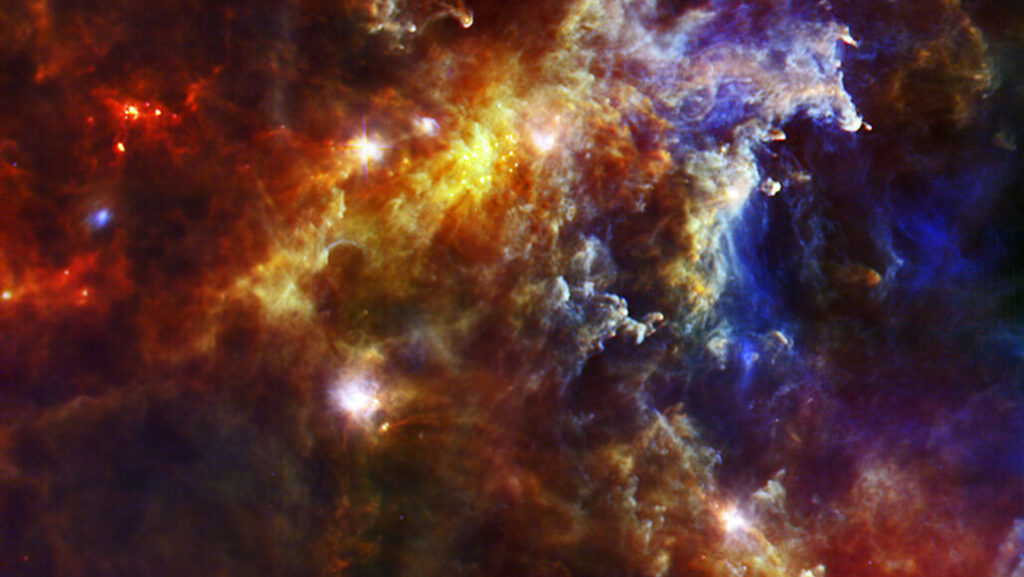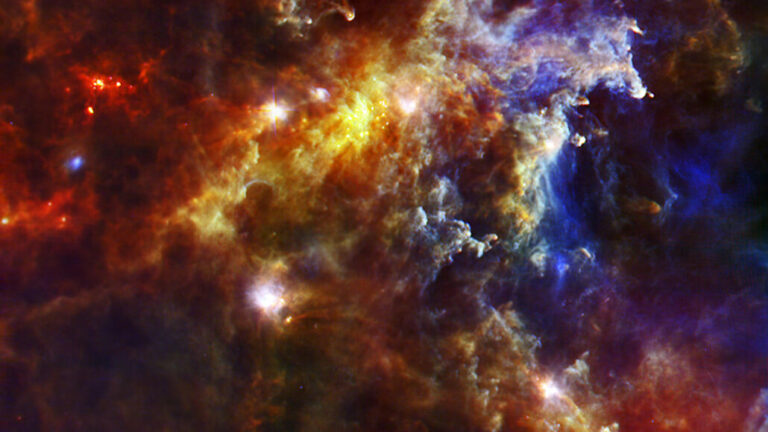Scientists Discover the Milky Way May Be Producing a Higher Number of Stars than Previously Estimated
Gamma rays reveal the galaxy’s star-making power
According to a recent estimate of its star formation rate, the Milky Way is generating a significantly greater number of stars than previously believed. The study, which was submitted to arXiv.org on January 24, found that gamma rays emitted from aluminum-26, a radioactive isotope that primarily originates from massive stars, indicate that the Milky Way transforms four to eight solar masses of interstellar gas and dust into new stars annually. This range is two to four times higher than the traditional estimate and corresponds to a yearly birthrate of approximately 10 to 20 stars in our galaxy, as the majority of stars are less massive than the sun.

HOBYS KEY PROGRAMME CONSORTIA/PACS & SPIRE CONSORTIUM/ESA
According to the new estimate of the star formation rate in the Milky Way, our galaxy is producing far more stars than previously believed. The gamma rays emitted by aluminum-26, a radioactive isotope that mainly originates from massive stars, indicate that the Milky Way generates four to eight solar masses of interstellar gas and dust into new stars each year. This range is two to four times higher than the previous estimate and translates to an annual birthrate of about 10 to 20 stars in our galaxy, as most stars are less massive than the sun. As a result, every million years, which is a mere moment in astronomical time, the Milky Way gives birth to 10 million to 20 million new stars, enough to fill around 10,000 star clusters like the exquisite Pleiades cluster in the Taurus constellation. Conversely, numerous galaxies, including most of those orbiting the Milky Way, do not generate any new stars.
“The star formation rate is very important to understand for galaxy evolution,” says Thomas Siegert, an astrophysicist at the University of Würzburg in Germany. The more stars a galaxy makes, the faster it enriches itself with oxygen, iron and the other elements that stars create. Those elements then alter star-making gas clouds and can change the relative number of large and small stars that the gas clouds form.
Siegert and his colleagues studied the observed intensity and spatial distribution of emission from aluminum-26 in our galaxy. A massive star creates this isotope during both life and death. During its life, the star blows the aluminum into space via a strong wind. If the star explodes when it dies, the resulting supernova forges more. The isotope, with a half-life of 700,000 years, decays and gives off gamma rays.
Like X-rays, and unlike visible light, gamma rays penetrate the dust that cloaks the youngest stars. “We’re looking through the entire galaxy,” Siegert says. “We’re not X-raying it; here we’re gamma-raying it.”
According to a recent estimate of the star formation rate, the Milky Way is producing more stars than previously thought. Researchers have found that the more stars the galaxy creates, the more gamma rays it emits. The best match with the observations is a star formation rate of four to eight solar masses per year, which is much higher than the standard estimate of about two solar masses per year. Pavel Kroupa, an astronomer at the University of Bonn in Germany, who was not involved in the study, believes that the revised rate is very realistic and represents a major step in the right direction. However, it is challenging to determine the distance that the gamma rays have traveled before reaching us, which makes it difficult to pinpoint the exact star formation rate. If some of the emission arises nearby, the researchers’ calculation of aluminum-26 may be overestimated, resulting in a lower star formation rate, but it is unlikely to be as low as the standard estimate of two solar masses per year.
Regardless, the Milky Way stands out as the most active star-forming galaxy in the Local Group, which comprises over 100 nearby galaxies. Even the largest galaxy in the group, Andromeda, only produces a fraction of a solar mass of new stars per year. While the Milky Way is the second-largest galaxy in the group, its significant star formation rate indicates that it puts in much more effort.
Do not forget to share your opinion with us to provide you with the best posts !




0 Comments